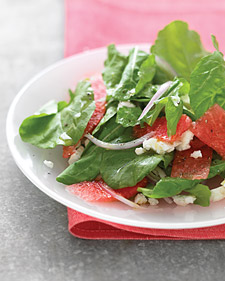Once the pan is in the oven, leave the foil lining and weights in place until the dough loses its wet look, turns an off-white from its original pale yellow, and the edges just start to take on a very light brown color. Carefully (the dough is hot) touch the side of the shell to make sure that the crust is set: firm and able to hold itself up. If you remove the weights too soon, the dough sides will slip down, ruining the pie shell. Bake the shell partially (another nine minutes)—until just golden brown—if the pie is to be baked again with an uncooked filling such as pumpkin or pecan pie or quiches. Bake the shell fully (another fifteen minutes from the point the foil is removed)—to a deep, golden brown—when no additional baking is required as with fruit tarts and cream, chiffon, or lemon meringue pies.
- 1 1/4 cups unbleached all-purpose flour , plus more for rolling out the dough
- 1/2 teaspoon table salt
- 1 tablespoon granulated sugar
- 4 tablespoons unsalted butter , cold, cut into 1/4-inch pieces
- 3 tablespoons vegetable shortening , chilled
- 4 to 5 tablespoons ice water
See instructions below: Fitting Pastry into Pie Dishes
1. Pulse flour, salt, and sugar in food processor workbowl fitted with steel blade. Scatter butter pieces over flour mixture, tossing to coat with flour. Cut butter into flour with five 1-second pulses. Add shortening and continue cutting in until flour is pale yellow and resembles coarse cornmeal, with butter bits no larger than small peas, about four more 1-second pulses. Turn mixture into medium bowl.
2. Sprinkle 4 tablespoons ice water over mixture. With blade of rubber spatula, using folding motion to mix. Press down on mixture with broad side of spatula until dough sticks together, adding up to 1 tablespoon more ice water if it will not come together. Shape dough into ball, squeezing two or three times with hands until cohesive, then flatten into 4-inch-wide disk. Dust lightly with flour, wrap in plastic, and refrigerate at least 30 minutes, or up to 2 days, before rolling.
3. Remove dough from refrigerator; let stand at room temperature to soften slightly, about 10 minutes if dough has chilled for 30 minutes or 20 minutes if it has chilled overnight. (The dough should be pliable. Use your hands to squeeze the dough; if you can squeeze it without applying too much pressure, it is ready to roll.) Roll dough on lightly floured work surface or between two sheets plastic wrap to a 12-inch disk about 1/8-inch thick. Fold dough in quarters, then place dough point in center of pie pan. Unfold dough. Alternatively, roll dough in 2-gallon zipper-lock bag to a 12-inch disk about 1/8-inch thick. Cut away top of bag. Grasping bottom, flip dough into pie pan and peel off bag bottom.
4. Working around circumference of pan, press dough carefully into pan corners by gently lifting dough edges with one hand while pressing around pan bottom with other hand . Trim edge to 1/2-inch beyond pan lip. Tuck this rim of dough underneath itself so that folded edge is about 1/4-inch beyond pan lip; flute dough in your own fashion. For quiche or tart pans, lift the edge of the dough, allowing the extra dough to flop over the sides. Then run the rolling pin over the top of the pan to remove excess dough. Next use your forefinger and thumb, press the dough evenly up the sides from the bottom to increase the height of the rim. Refrigerate pie shell for 40 minutes and then freeze for 20 minutes.
5. Meanwhile, adjust oven rack to middle position and heat oven to 375 degrees. Press doubled 12-inch square of aluminum foil inside dough shell; evenly distribute 1 cup or 12 ounces ceramic or metal pie weights over foil. Bake, leaving foil and weights in place, until dough dries out, about 17 minutes. Carefully remove foil and weights by gathering sides of foil and pulling up and out. For partially baked crust, continue baking until lightly golden brown, about 9 minutes more; for fully baked crust, continue baking until deep golden brown, about 15 minutes more. Transfer to wire rack to cool.
STEP BY STEP: Fitting Pastry into Pie Dishes
Use kitchen scissors to trim the dough to within 1/2 inch of the lip all the way around. Tuck the overhanging dough back under itself so the folded edge extends 1/4 inch beyond the pan lip. Press it to seal.
Run the rolling pin over the top of the pan to remove excess dough.
Using your forefinger and thumb, press the dough evenly up the sides from the bottom to increase the height of the rim.
Flute the edges all around; an exaggerated flute is helpful for obtaining maximum holding capacity.
FOR QUICHE OR TART PANS: Lift the edge of the dough to ease it into the dish, allowing the extra dough to flop over the sides.
FOR STANDARD PIE PAN: Lift the edge of the pie dough with one hand and ease the pastry along the bottom into the corners with the other hand; repeat around the circumference of the pan. Do not stretch the dough.
from Cook's Illustrated





























